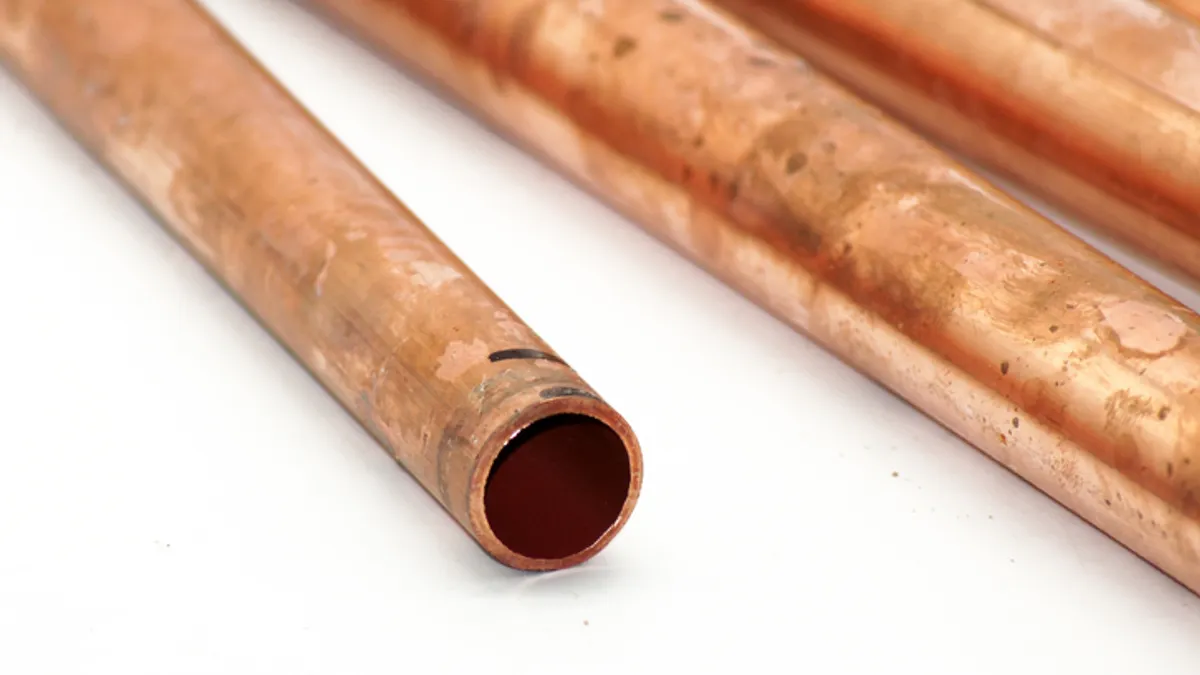Municipal sewer back-ups that cause sewage to seep into residential basements are a nightmare for citizens and local governments alike. But that's one problem on the decline in Kansas City, MO thanks to the city's tech-forward, data-centric Smart Sewer Program.
The project progressed this week through a partnership with Electro Scan that will use the company's leak detection technology to assess the condition of a 22-mile section of sewer pipes. The city is using the Focused Electrode Leak Location (FELL) technology to quickly and efficiently pinpoint leaks in the sewer system.
Kansas City previously used Closed-Circuit Television (CCTV) for these kinds of inspections, but that technology has limitations when trying to inspect joints and service connections, Electro Scan CEO Chuck Hansen told Smart Cities Dive.
"The CCTV cameras were not made for joints... Our intelligent probe is able to enter a pipe, transverse it and auto-detect and measure the gallons per minute of each leak," he said. "If there's the slightest leak... we locate that to the closest centimeter."
The Smart Sewer project's origins lie in a 2010 U.S. Environmental Protection Agency (EPA) consent decree requiring the city to implement an Overflow Control Plan to eliminate raw sewage and stormwater overflows into surface water, and instead ensure all of it is appropriately routed to the city's six wastewater treatment plants. This 25-year project represents the largest single infrastructure investment in the city's history, at an estimated $4.5 billion to $5 billion.
When Special Assistant City Manager Andy Shively came onto the project in 2012, he decided to make the effort more data-driven. The concept involved using the infrastructure Kansas City already has and improving it, rather than the more onerous and expensive endeavor of building anew.
But Shively wanted to assess the real conditions of the sewer system, instead of relying on existing assumptions, before sending crews in to perform upgrades. That's where the technology comes in.
"I need to make sure my existing collection system is in shape — that it's in the condition to handle the flow through. The FELL technology helps me identify those segments strategically so I invest capital dollars appropriately and get the biggest bang for my buck," Shively said.
"He's such a data-driven kind of guy... He was really looking from the bottom up, on a pipe-by-pipe basis," Hansen said. The project required "forensically and independently — in unbiased fashion — assessing pipes before and after [the upgrades]... so he could quantify success."
Separate from the FELL technology, the city deployed a smart sensor network in the sewer system. It currently consists of about 300 sensors and at full build-out will house about 330. The sensors collect data 24/7, 365 days a year, to determine the system capacity and where flows can be stored during or following storms. When the system reaches capacity — especially in areas where there might be leaks — overflows can occur, which is exactly what the upgrades are intended to prevent.
"We are using that data through machine intelligence. It learns how to predict the collection system [capacity] or react during certain during wet weather events. It [considers] NOAA weather patterns, it's measuring the flow and our model keeps improving over time as the machine intelligence adjusts and predicts how our system will react," Shively said.
He estimates that in 2017, the city had about 80 gigabytes of information related to its sewer system, but that number has since swelled to about 5.4 terabytes.
The added technology and system upgrades, including inflow and infiltration reduction, sewer separation and neighborhood sewer rehabilitation projects, already have reduced the frequency of back-ups and sewage flows into residents' basements. The city corroborates fewer citizen complaints to its 311 service about basement backups in areas where work has been completed.
"We've learned recently that our system performed better and had more capacity than we thought. We've identified additional in-line storage we can utilize. We put large gates in our collection system and used those pipes... to store flows, using the real-time decision support system (RTDSS) to operate the gates," Shively said.
Despite the hefty investment, the city estimates the Smart Sewer Program concepts, especially the technologies, have achieved around a billion dollars in cost savings.
"A lot of cities take what they know about their system as fact and don't go back and question it."

Jennifer M. Rusch
Senior public involvement specialist for water, Burns & McDonnell
"A lot of cities take what they know about their system as fact and don't go back and question it. [Shively] has spent $35 million to go back and question what we thought we knew," said Jennifer M. Rusch, senior public involvement specialist for water at Burns & McDonnell. "What he found is we actually knew very little about our system. By spending that $35 million he's been able to save over a billion dollars in other areas by utilizing assets we already have."
The program is funded solely through wastewater revenues. That's been a sticking point for some residents, considering it has prompted Kansas City's wastewater rates to jump 292% since 2009. Shively says citizens are disappointed when they hear rates are not expected to decrease, but they understand when they learn how the city is actively working to reduce the Smart Sewer Program costs to get rates to flatten out instead of continuing to climb.
London and other cities — mainly in Europe — have been in contact with Kansas City to discuss the Smart Sewer Program and how the concepts could be applied in their systems. Similar to the sewer program, more cities are using technology such as automated systems, robots and drones to upgrade aging water infrastructure and improve water management systems.
"You're taking cutting-edge technology and applying it to 100+ year old sewers to find solutions that can save money for generations," Rusch said.


















